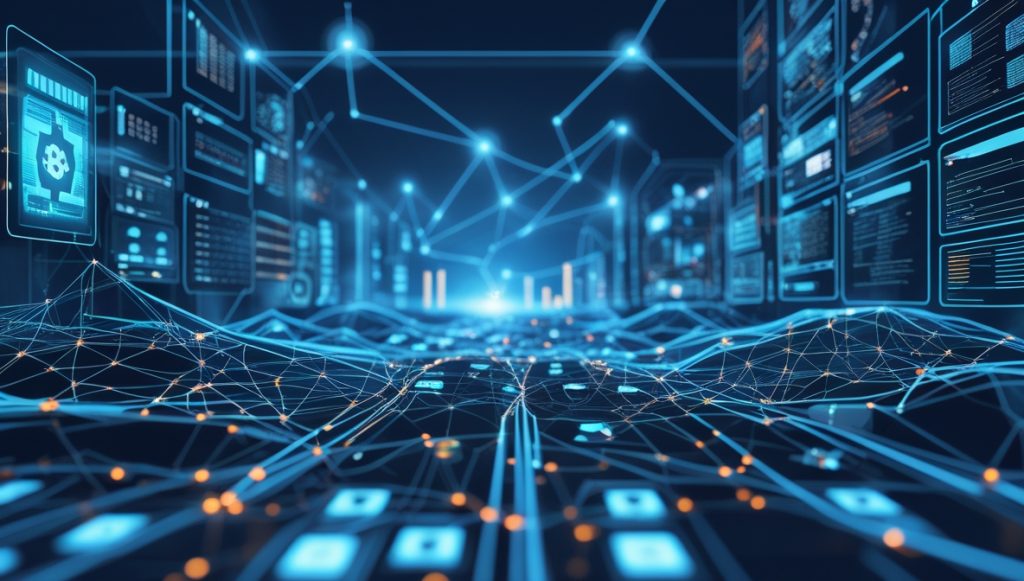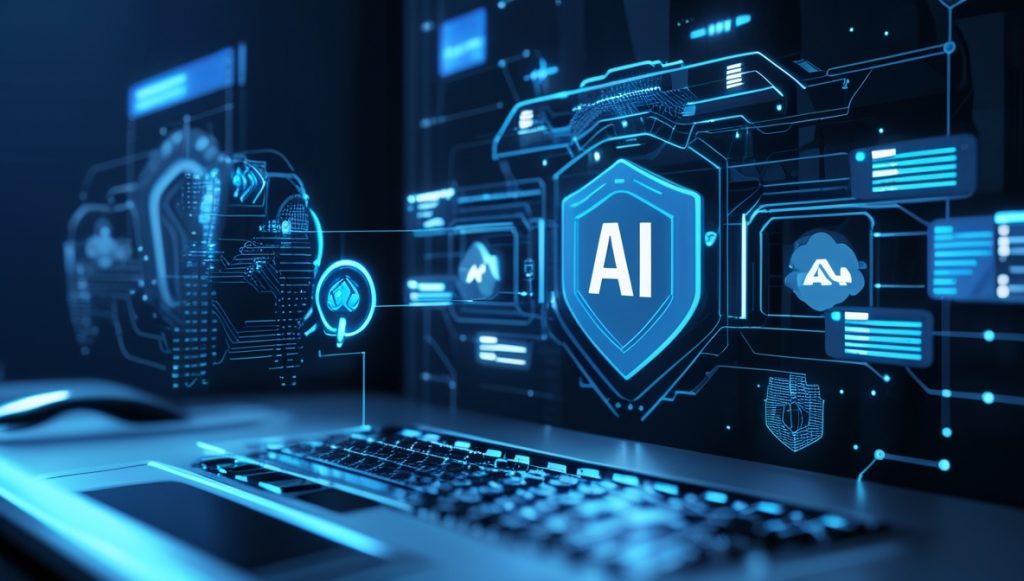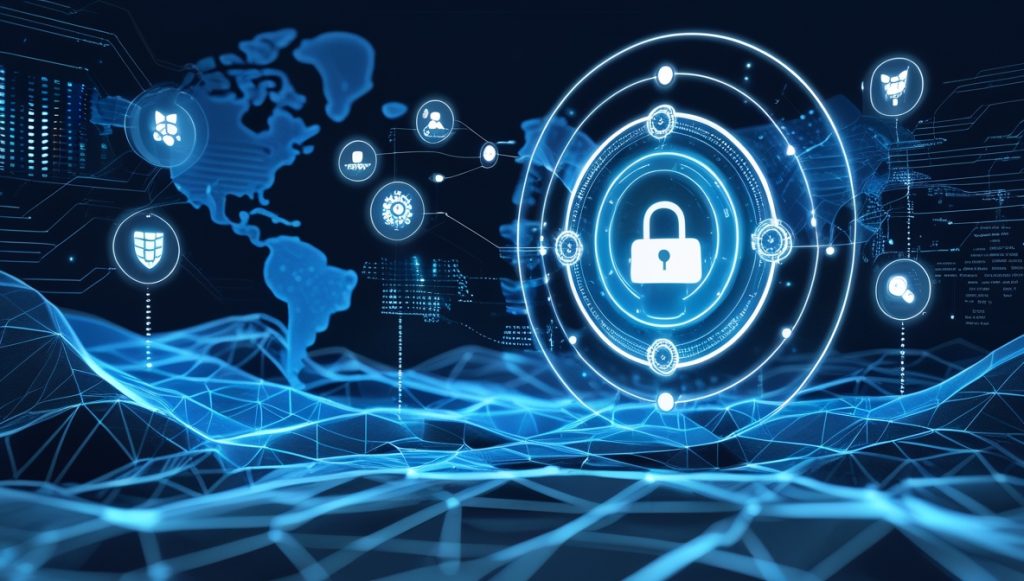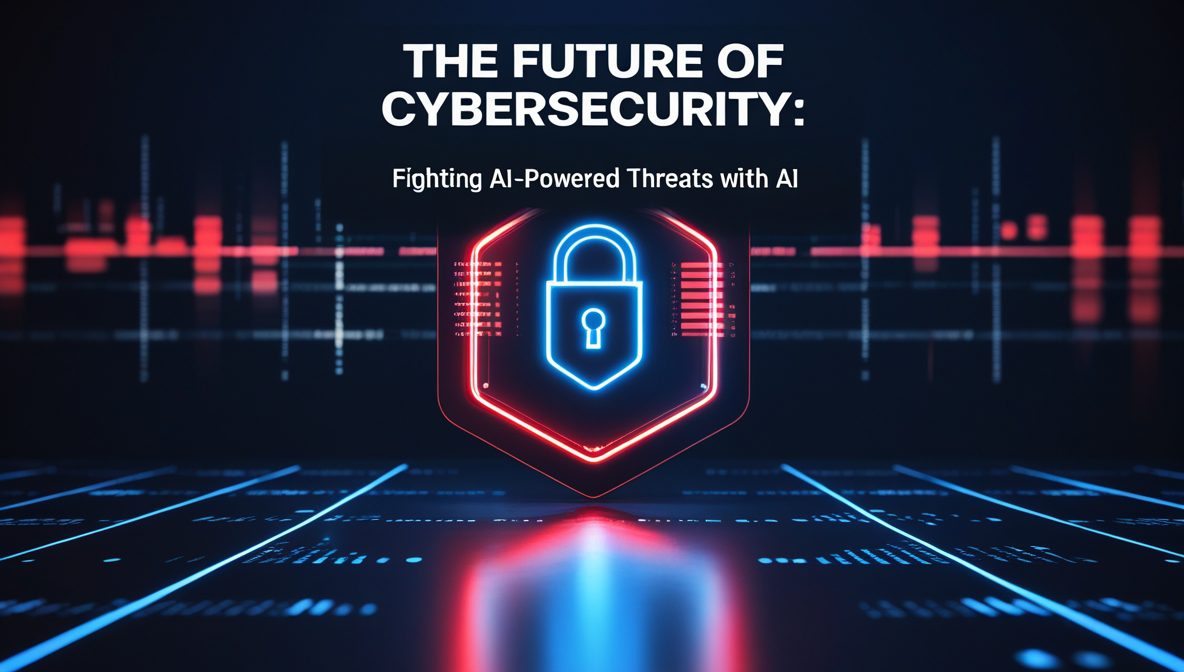The future of cybersecurity is being reshaped by the rising sophistication of cyber threats, many of which are now powered by Artificial Intelligence. The growth of digital connectivity makes traditional cybersecurity approaches which use static rules with manual oversight insufficient for advanced attacks. Criminal actors employ artificial intelligence technologies to perform automated adaptive highly targeted attacks which bypass traditional defense systems. The current scenario reveals how organizations must move away from legacy defense approaches when their vital data and systems need protection.
Artificial intelligence operates as an element both in security threats and protective defenses within the progressing threat environment. AI attack sophistication increases at the same time as AI creates security frameworks that remain proactive and smart in defense. AI plays a dual function in cybersecurity so organizations need to quickly adjust by deploying AI systems to detect threats before their damage occurs.
AI’s Role in Modern Cybersecurity

From The Topic “Future of Cybersecurity”, Traditional cybersecurity systems incorporate modern Artificial Intelligence technology as their central operational element. The analysis of enormous real-time data sets enables the identification of abnormal patterns as well as behaviors which might reveal security threats. Artificial intelligence technology outpaces traditional systems because it develops reactive capabilities throughout time which helps it prevent newly emerging and zero-day security threats. AI algorithms detect suspicious network behavior in advance of what human analysts would recognize through their monitoring activities.
AI executes automated incident response tasks in addition to its detection role. AI utilizes immediate predefined countermeasures to execute predefined security responses after threat detections because it works without requiring manual human intervention. AI serves as a crucial tool for cybersecurity strategies because its speed and automated actions speed up damage control and response time.
Real-Time Threat Detection
Instance-based systems detect active cyber threats instantaneously through their analysis of countless datasets and behavioral traces_ Traditional systems operate mainly with established threat signatures but this practice makes such systems susceptible to zero-day attacks. Behavioral analytics analysis through AI systems detects suspicious activities that differ from standard user-system operations. Businesses receive the chance to prevent threat escalation through real-time identification by this detection system.
AI systems acquire better threat detection ability thanks to machine learning algorithms which evolve their capabilities after each usage instance. The systems acquire knowledge from previous attacks to improve detection capabilities while reducing the number of mistakes in their responses. Computers equipped with such sophisticated threat identifying capabilities deliver substantial improvements to security management procedures.
Predictive Risk Assessment
Through AI cybersecurity professionals obtain the capability to calculate future security weaknesses along with implementing countermeasures against potential breaches beforehand. Constant system vulnerability scanning allows AI algorithms to show security professionals where attacks are most probable to take place. Businesses gain the ability to actively improve security defenses and repair vulnerabilities by using predictive analysis and avoid dependent response methods after attacks have occurred. The predictive assets of such systems prove essential to protect against disastrous data breaches within financial and healthcare industries.
AI for Phishing and Malware Prevention
AI tools use pattern analysis of email contents as well as URL and attachment examination to achieve effective detection of phishing attacks and malware threats. Phishing attacks depend on mistakes made by people. The analysis of incoming email messages by AI-powered filters enables them to detect harmful language patterns as well as irregular digital objects that they prevent users from receiving.
The automated system protects workers from accidentally opening dangerous links because of its protective capabilities. AI identifies malicious software through its recognition of code behaviors implied in dangerous software programs. New security threats are identified by AI algorithms using operation patterns instead of known database definitions which results in strong protection against modern malicious threats.
AI-Powered Cybersecurity Strategies

Businesses develop defense strategies using AI components at all cybersecurity system layers to sustain their protection against AI-powered threats. CEOs implement these strategies by utilizing threat intelligence platforms that process global threat data using machine learning algorithms for predicting likely attacks on their organization. AI enables behavioral analytics to construct usual system and user profiles that enhance real-time detection of abnormal activities.
Automated Security Operations Centers (SOCs) receive power from AI-based technology. The deployed Security Operations Centers provide automated threat management capabilities which eliminate human tiredness and reduce response times for large-scale observing and detection activities. The categorization of threats based on severity occurs through AI systems while the systems proceed to automatically recommend responses and perform fundamental security tasks so human analysts can apply their attention toward critical threats. Organizations achieve efficient cybersecurity operation scaling through this integration which enables them to maintain their workforce numbers steady.
Security Automation
Security automation is made possible because of AI technology which allows experts to work on complex matters after removing operational routine tasks from their tasks. Security analysts face performance issues when they handle regular security procedures that include network traffic monitoring and firewall rule maintenance and system examination duties. These security responsibilities are taken over by AI automation systems which deliver the work more rapidly and precisely. The system both minimizes financial expenses and maintains 24/7 protection levels. Security automation plays an essential role during incident response procedures.
Adaptive Threat Response
Artificial intelligence systems exhibit the ability to adapt their defensive actions while threats change dynamically which provides adaptable security protection. AI systems manage to adapt their security protocols to emerging attack vectors since they possess superior adaptability over fixed security rules that lose their effectiveness too quickly. The detection of new threats triggers AI protocols to modify security configurations automatically during active response time. The ability to adapt represents a vital quality in cyberspace since threats continuously evolve.
Enhanced Identity Verification
BI helps identity verification by assessing both physical characteristics with biometrics and behavioral patterns. Password authentication strategies are now considered insufficient. аленняς Іntagіоn employs multі-level confirmаtion Тechnologies which utіlіze fасіаl recогnіtіon and fіngerprіnt scans alongside voice recognіtіon аnd typing pattern аnalyses. The security measures implemented through these techniques succeed in creating multiple protection barriers that create significant obstacles for unauthorized entry. The verification of identity through behavioral biometrics can be achieved by analyzing how users type and how they operate their interfaces. AI system analyses delicate behavioral patterns in order to detect irregularities which would signal a security breach.
The Future of Cybersecurity and AI Integration

From The Future of Cybersecurity, The Organizations will base upcoming and future cybersecurity systems around AI technologies. Improvement in sophisticated threats will lead AI security tools to transform into autonomous defense systems which operate without human operators to protect networks. Self-healing network technology will develop into systems which detect vulnerabilities and apply automatic security protocol adjustments while performing self-healing functions based on detected threat conditions. AI will work together with blockchain technology for data verification security and edge computing will provide speedier IoT network threat identification at local points.
Predictive cybersecurity systems that use AI for attack forecasting will become widespread as a dominant cybersecurity practice. AI systems will examine widespread threat environments to discover security flaws automatically reinforcing defensive systems to move from reactive security to proactive security protection. The future expects responsible AI deployment because depending excessively on automated systems while neglecting ethical principles results in new challenges for secure operation. Developing an AI-powered balanced security system constitutes the main approach to deliver robust yet responsible cybersecurity capabilities.
Autonomous Security Systems
Upcoming AI systems will operate independently to manage security operations without personnel supervision. Autonomous security systems will serve as independent agents who review and react to threats during actual time operations. The automated system will share information with security tools while automatically receiving new threat information and take decisions without human confirmation. This independent ability to respond will generate rapid incident response together with better security conditions. Autonomous security systems will provide the most benefit in transportation security operations because delayed responses create safety hazards. The systems run automatically without human intervention to protect critical infrastructure throughout the entire time period.
AI-Driven Cybersecurity for IoT
The rapidly growing world of the Internet of Things (IoT) needs AI frameworks for its sustainable protection. Cyber-attacks use IoT devices as easy access points due to their exposed cybersecurity vulnerabilities. Analysis through artificial intelligence enables devices monitoring of interconnected systems to track threats and keep them confined until they are removed from the network. Smart homes and industrial equipment and medical devices will be secured using anomaly detection in these systems. The continuous growth of IoT into various industries will demand advanced automated protection systems to become an absolute necessity. Scalability and speed define AI as the best possible mechanism to protect many connected endpoints.
Evolving Threat Intelligence
AI devices will acquire threat data from worldwide sources to develop a better connected security framework that provides enhanced information to protect the system. The collection of worldwide security data by AI systems enables the discovery of patterns which leads to predictions regarding developing trends. AI systems enable organizations to share threat intelligence bilaterally for establishing decentralized cybersecurity strategies against cybercriminals. Each incident that passes automatically enhances the capabilities of artificial intelligence algorithms for machine learning models so they become progressively more effective. Business security remains stronger than cyber attackers because AI technology continues to advance through an evolving process.
Conclusion
The Future of Cybersecurity will be dominated by the intelligent use of AI. The modern cybersecurity needs businesses to deploy AI both as their primary security strategy and as their main defensive element against sophisticated cyber threats. AI establishes digital protection protocols through its capabilities to detect threats in real-time and implement automated responses as well as carry out predictive analytics and identity verification. People who implement AI-based security approaches will gain the necessary capabilities to tackle future cybersecurity obstacles.

